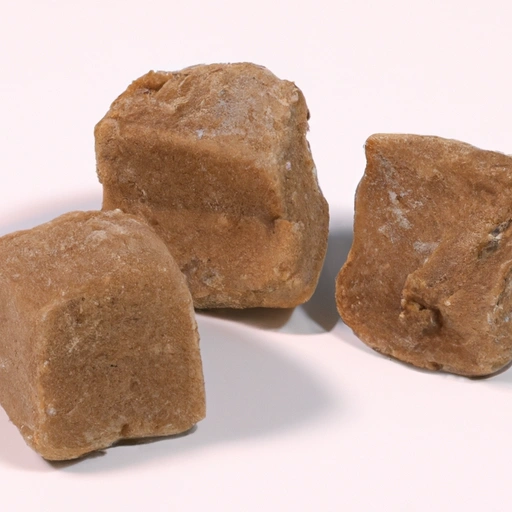Piloncillo
Description

Piloncillo, also known as panela or rapadura in some regions, is a type of unrefined sugar commonly used in Mexican, Central American, and South American cuisine. It is made by boiling and evaporating sugar cane juice, then pouring it into molds where it hardens into a solid cone or block shape. Piloncillo has a deep brown color and a distinctive molasses-like flavor, making it a unique sweetening agent in both sweet and savory dishes. Its rustic, unrefined nature means it retains more of the natural nutrients found in sugar cane, compared to processed sugars.
Common uses
Piloncillo is most commonly used as a sweetener in beverages, baked goods, and desserts. It is also an essential ingredient in various sauces, marinades, and traditional dishes, where it imparts a unique caramel-like flavor that cannot be replicated with other sugars. Its versatility allows it to be used in a wide range of recipes, catering to the sweet preferences of different cultures.
Nutritional value
Calories
In a typical serving of 1 ounce (28 grams or approximately 2 tablespoons), piloncillo contains about 105 calories.
Protein
Piloncillo has a negligible amount of protein, with less than 0.1 grams per serving.
Fat
This ingredient contains virtually no fat, making it a fat-free sweetening option.
Carbohydrates
Most of the caloric content in piloncillo comes from carbohydrates, with about 27 grams per serving, mostly in the form of sugars.
Vitamins
While not a significant source of vitamins, piloncillo does contain trace amounts of B-vitamins due to its minimal processing.
Minerals
Richer in minerals than processed sugars, piloncillo provides small amounts of calcium, magnesium, potassium, and iron, which contribute to its nutritional profile.
Health benefits
Though piloncillo is a form of sugar and should be consumed in moderation, its unrefined nature means it retains some of the natural molasses, providing a modest amount of minerals. As a result, it may have a slightly lower impact on blood sugar levels compared to refined sugars, due to its slightly higher content of trace nutrients and minerals.
Potential risks
Like other forms of sugar, excessive consumption of piloncillo can contribute to various health issues such as tooth decay, weight gain, and an increased risk of chronic diseases such as type 2 diabetes and heart disease. It is important to use piloncillo in moderation as part of a balanced diet.
Common recipes
Piloncillo is a key ingredient in recipes such as traditional Mexican flan, capirotada (bread pudding), and atole (a warm beverage). It is also used to sweeten coffee or tea and can be found in savory dishes like mole sauce.
Cooking methods
Piloncillo can be grated or melted to incorporate into various recipes. It can also be dissolved in liquids to create syrups and marinades or used as a glaze for meats and vegetables.
Pairing with other ingredients
The rich molasses flavor of piloncillo pairs well with spices like cinnamon, cloves, and ginger, as well as ingredients like chocolate, coffee, and tropical fruits. It complements savory dishes with its caramel undertones, enhancing the depth of flavor.
Summary
Piloncillo is a traditional unrefined sugar with a unique flavor profile and cultural heritage. While providing certain nutritional benefits, it should be enjoyed in moderation. Its distinct taste and versatility make it a valuable ingredient for both sweet and savory recipes from around the world.